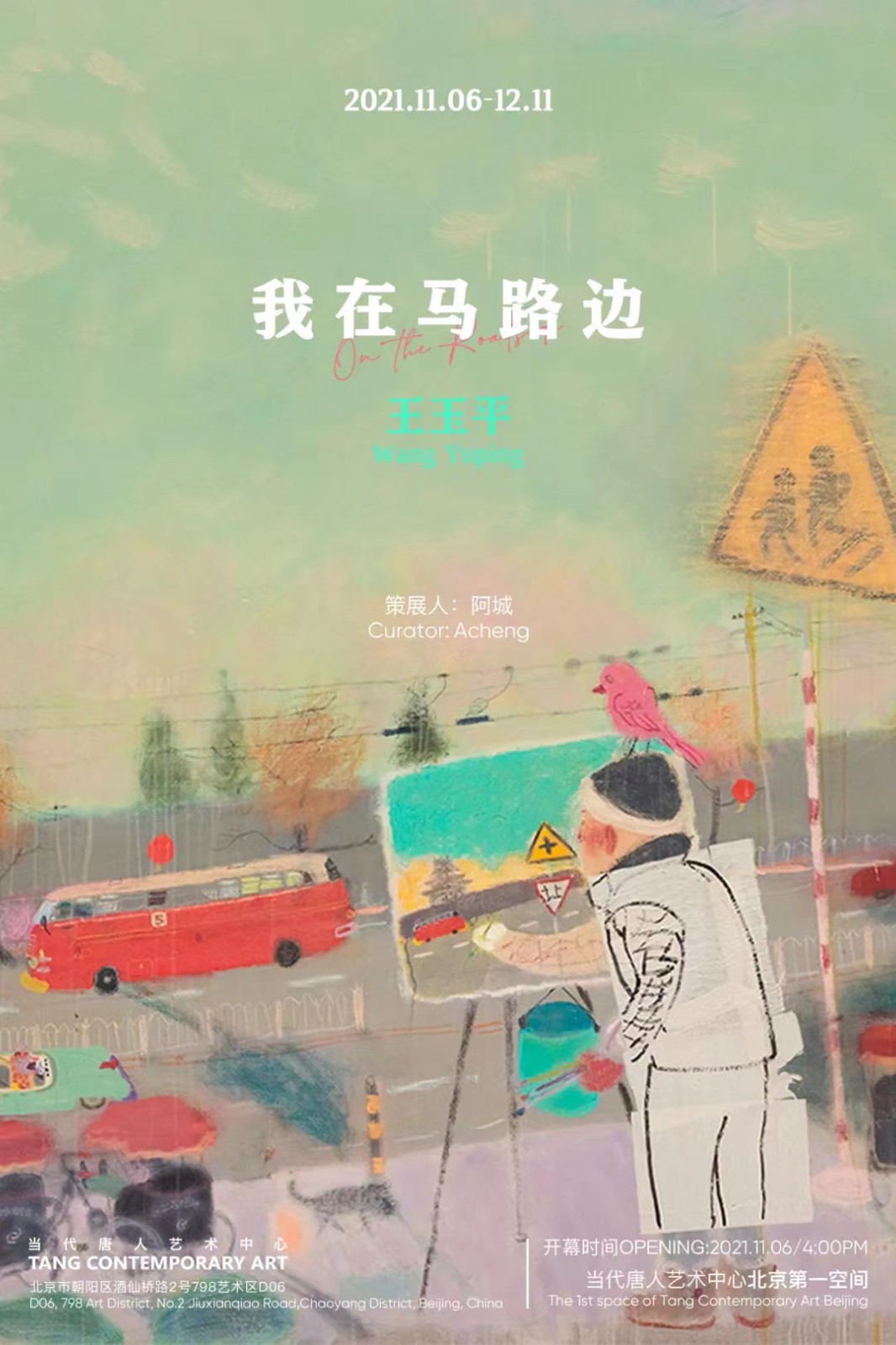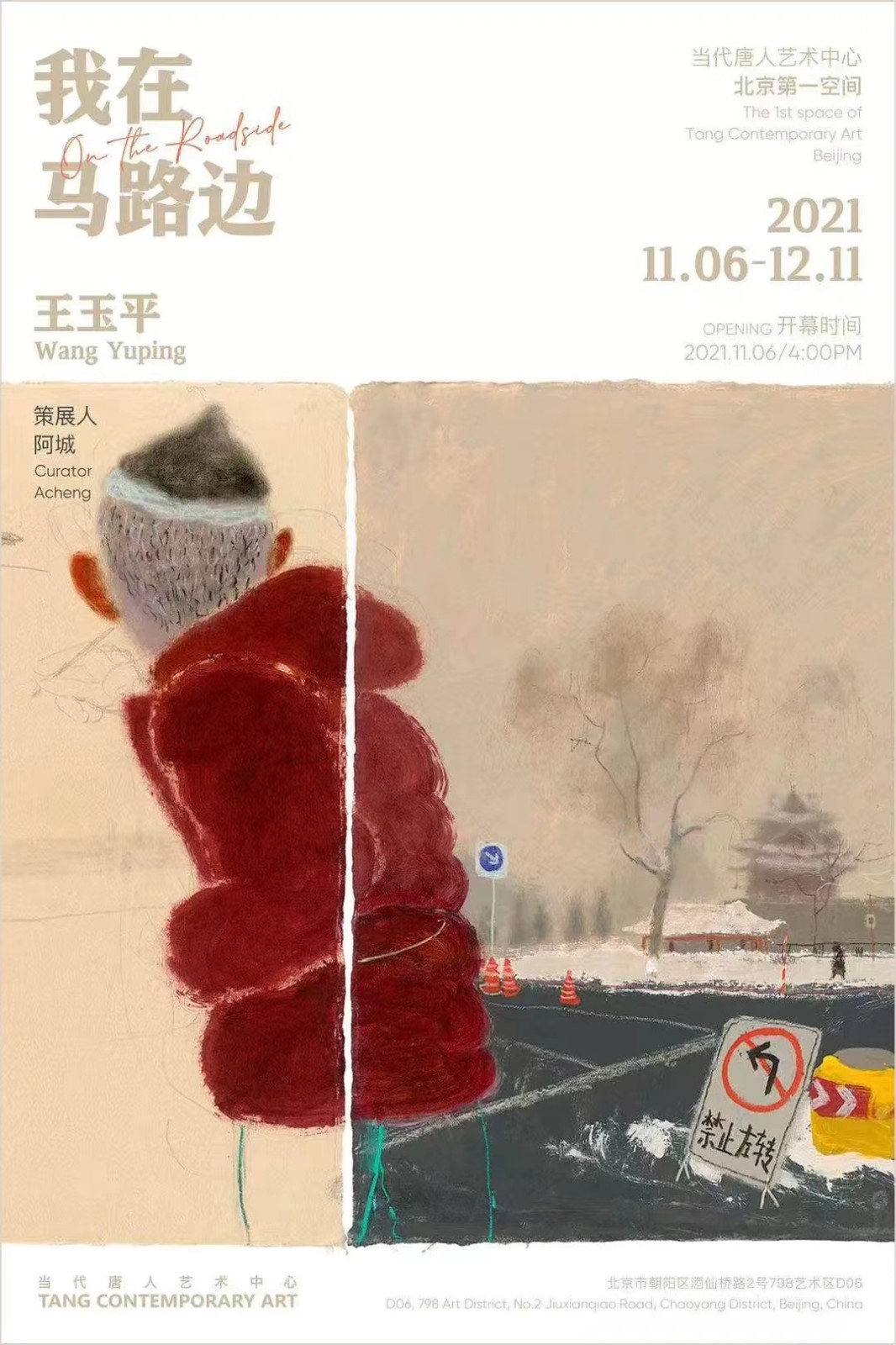 Tang Contemporary Art announces the latest solo exhibition for Wang Yuping, entitled “On the Roadside,” which will open in the gallery’s first Beijing space at 4 p.m. on November 6 (Saturday).
Tang Contemporary Art announces the latest solo exhibition for Wang Yuping, entitled “On the Roadside,” which will open in the gallery’s first Beijing space at 4 p.m. on November 6 (Saturday).
Curated by Acheng, the exhibition will showcase several important recent works that Wang Yuping has painted from life, including the 30-meter-long On the Roadside made over four years and the nearly six-meter-long Jingshan in the Rain and Snow, as well as Jingshan Park, which he painted at age 16. Watchtowers and noodle shops, clear days and snowscapes, crows and feral cats, and the vivid charm of Beijing flow from Wang Yuping’s brush.
Introduction
Humanity has never ceased to be interested in color. Even in Chinese ink painting, artists pursued a range of dark and light effects in black, white, and gray, stressing the concept of the five tones of ink. However, black and white are not actually colors; they are simply the darkest and lightest shades.
During the classical era prior to the Impressionists, inherent color dominated European painting. However, in the Low Countries, primarily the Netherlands, in the thirteenth and fourteenth centuries, artists from Jan van Eyck to Johannes Vermeer contributed to the use of color-based gray. Their depictions of color-based gray almost achieved the effect of modern photo film, far surpassing the level of skill demonstrated in Renaissance Italy.
Color-based gray is gray that is mixed with two or more colors and not the gray produced by combining black and white. Most people are unaware of this, though it is common knowledge among professional painters.
These two Dutch painters accurately and reliably depicted the color-based gray of masonry, wood, wall plaster, and metal illuminated by light from a window. During this time, painters produced their own pigments, so the study of color was the study of paint, and color was comprised of the three primary colors: red, yellow, and blue.
We seem not to realize that the light here is an imitation of reflected light: the light shines on an object, which then reflects the light to the viewer. The realistic light effects of classical painting match with our everyday experience.
During the Industrial Revolution in Europe, Impressionism developed in France. Optical physicists declared that visible light was comprised of blue, green, and red, which was an earth-shattering discovery. The later development of the color television was based on this principle. People often do not realize that televisions produce direct rays of light. The screen is luminous and shining directly in to our eyes.
Monet did not use the methods of classical painting in his work, but the light effects were quite intense. In his paintings, Seurat employs the principles of visible light; he uses colored dots to create intense light effects. The Impressionist painters essentially created the effect of direct light. Their images also have a luminosity to them, but it is not that of the light shining on the image then reflecting into our eyes.
A revolution took place when the imitation of reflected light in classical painting shifted toward the luminous objects in Impressionist painting, which imitated light shining directly at us.
In the early twentieth century, édouard Vuillard used a color-based gray that differed from that of classical painting and the Impressionists’ “objective” color-based gray. He added highlights to his paintings by combining this gray with modern unmixed colors.
édouard Vuillard’s color-based gray is much brighter. This development was already notable in the work of late classical painters, such as Anders Zorn, who had been influenced by the Impressionists.
I believe that this lineage of color-based gray is the historical source for Wang Yuping’s way of painting and the modernity of the colors in his work. The modernity of Wang’s painting is also conveyed in his use of unmixed colors.
Unmixed colors are made from unmixed paint. The shamanic era in human history saw the greatest use of these unmixed colors. Color psychology today still utilizes experiences from that past: red represents passion and blue represents sadness.
Unmixed colors have become protagonists in modern and contemporary art, and the large-scale use of shamanic unmixed colors has meant a corresponding reduction using color-based gray. In this context, Wang Yuping subtly utilizes color-based gray, while also boldly applying unmixed colors. When he uses color-based gray and unmixed colors together, the color-based gray intensifies the unmixed color—this is what makes Wang stand out among contemporary painters.
For those of you who can appreciate both the development of color-based gray in painting and the subversiveness of contemporary unmixed colors, Wang Yuping’s accomplishments in painting will be obvious.
I do not want the enjoyment of this exhibition to be reserved for the dinner after the opening, nor do I want this short essay to mediate your enjoyment of the show, because I believe everyone will gain something from this exhibition.
Curator: Acheng
About the exhibition

Dates: 11.06 - 12.11, 2021
Venue: Beijing 1st Space, Tang Contemporary Art
Courtesy of the artist and Tang Contemporary Art.




























